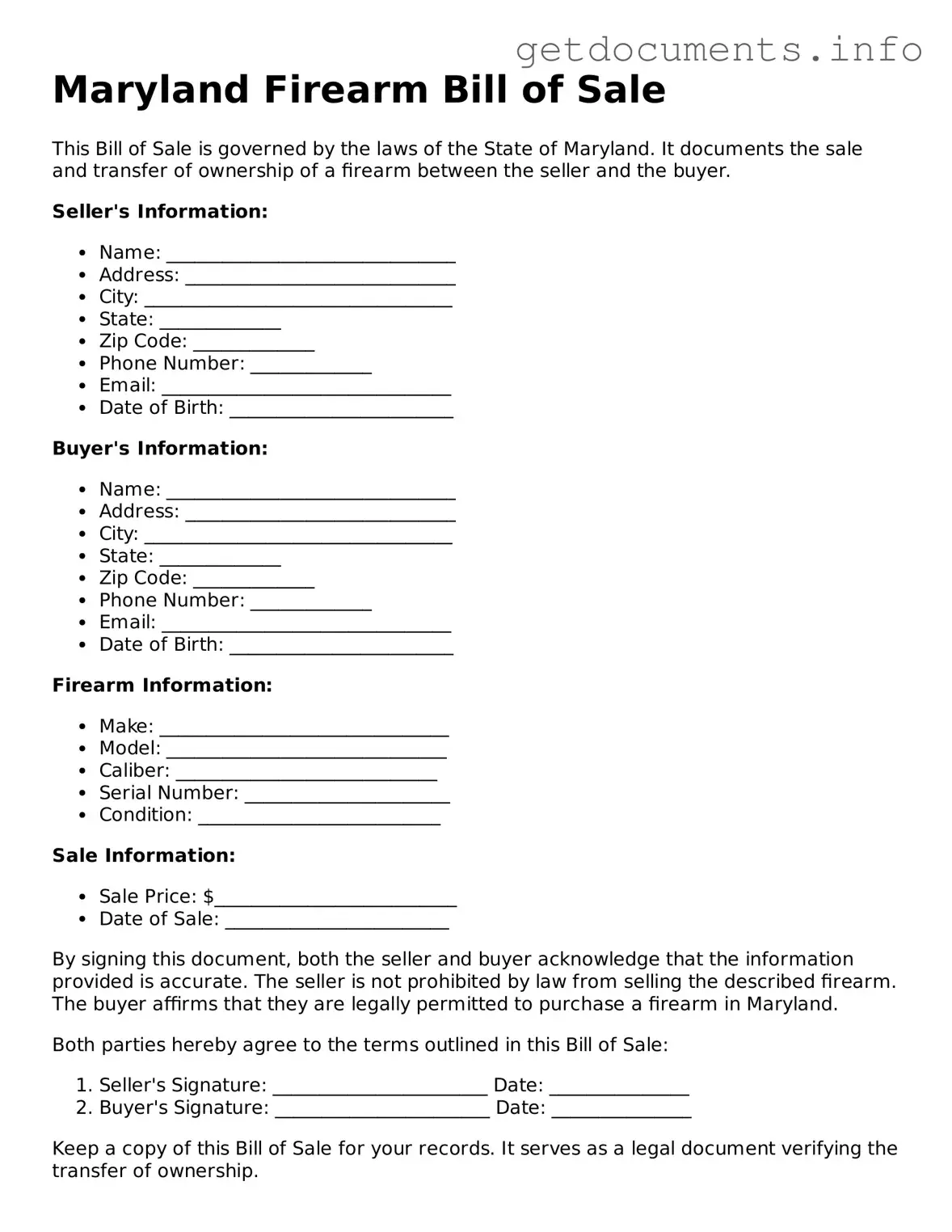Free Firearm Bill of Sale Template for Maryland
The Maryland Firearm Bill of Sale form is a crucial document that records the transfer of ownership of a firearm between a seller and a buyer. This form ensures that both parties have a clear understanding of the transaction and provides legal protection in the event of future disputes. To facilitate a smooth transaction, it is important to fill out this form accurately and completely.
For your convenience, you can fill out the form by clicking the button below.
Access Firearm Bill of Sale Editor
